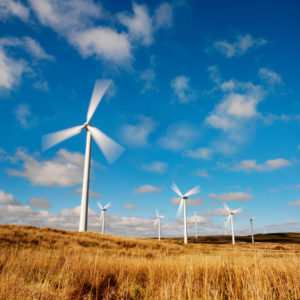Five years ago, John Lawhorn and his staff at the Midwest Independent System Operator (MISO) faced a challenging question: How would the U.S. Environmental Protection Agency’s (EPA) proposed Mercury and Air Toxics Standards impact electric companies and other stakeholders in the 11 states where MISO was responsible for delivering reliable, cost-effective power? (The grid operator MISO has since expanded to 15 states, and is now called the Midcontinent Independent System Operator.) Their prediction that the rules would lead to the retirement of about 12,000 megawatts of coal-fired generation capacity was remarkably accurate. To date, about 10,000 megawatts have been retired.
Lawhorn isn’t psychic. Rather, he relied on the EPRI software Electric Generation Expansion Analysis System, or EGEAS, which has become essential for his policy and economic analysis work at MISO. “We run it every day and have trained 15 people to use it since first obtaining it seven years ago,” said Lawhorn, who received a 2014 EPRI Technology Transfer Award.
Electric system planners like EGEAS because it can analyze many complex, multi-year resource planning scenarios in just minutes—much faster than similar software.
EPRI first developed EGEAS in the early 1980s and has continually enhanced it with new features. Later this year EPRI will release version 11, funded in part by MISO. EPRI licenses third-party software firms to provide training and support for EGEAS users.
A Key Tool for Transmission Planning
EGEAS analysis is step one in MISO’s annual seven-step planning process to ensure system reliability and compliance with state and federal requirements. MISO and its stakeholders typically identify four scenarios to reflect evolving policies by analyzing load forecasts, fuel prices, demand response, energy efficiency, renewable energy penetration, and other variables. They run the scenarios through EGEAS and use the results to support generation capacity planning, power plant siting, and assessing costs and power flows in the system.
For example, to help determine new power plants needed to meet electricity demand in five years, EGEAS can project future load, cost and performance of various generation technologies, and cost of environmental regulatory compliance—and then provide guidance on the most economically efficient power plant construction.
Without EGEAS, long-term generation planning would require MISO to gather information that electric companies would rather not supply. “Due to business confidentiality, the generators typically will not disclose their generation plans,” said Lawhorn. “EGEAS allows MISO to set the needed generation forecast without that information.”
With respect to state and federal policies, MISO uses EGEAS to analyze cost implications for stakeholders such as electric companies, regulators, independent power producers, and power marketers. A recent assessment of the potential impact of the EPA’s Clean Power Plan, which seeks to limit carbon dioxide emissions from existing power plants, indicated the possible retirement of another 14,000 megawatts of coal plants.
Because of the tool’s demonstrated value, MISO has suggested that regulators and electric companies in its territory use it for their own analyses. Doing so, said Lawhorn, will make communication easier. “When you start talking regulations, it’s helpful if everyone speaks the same language,” he said. Of the 15 state public utility commissions in MISO’s territory, 10 currently use EGEAS.
Users Around the World
Electric companies and regulators in Egypt, Israel, Malaysia, Saudi Arabia, Taiwan, and Thailand have used EGEAS for analyses, and one Asian company used EGEAS to plan power plant construction to best support regional economic development.
While MISO has devoted substantial resources to train its personnel to use EGEAS, such investment is not always required for significant benefits. “We know of a small utility where one person is responsible for generation planning,” said Adam Diamant, a technical executive in EPRI’s Energy and Environmental Analysis Program. “And he has become a powerful EGEAS user, too.”
Free EGEAS resources are available here.
EPRI Technical Expert:
Adam Diamant



